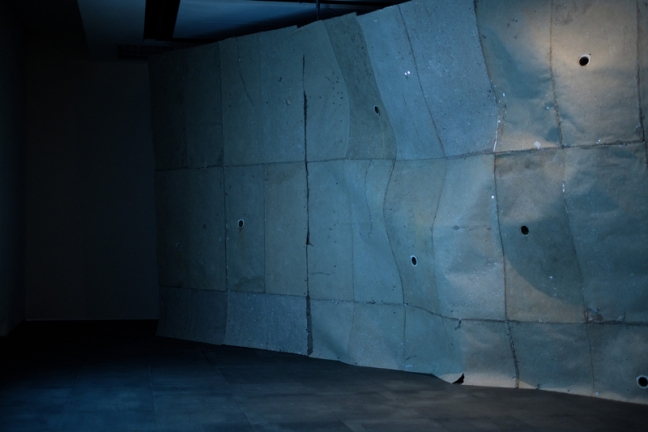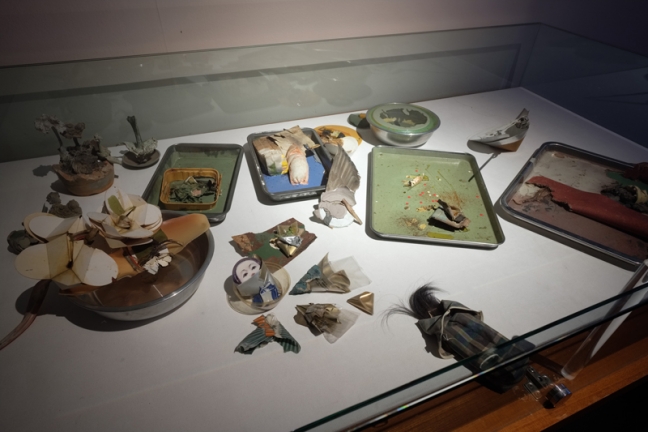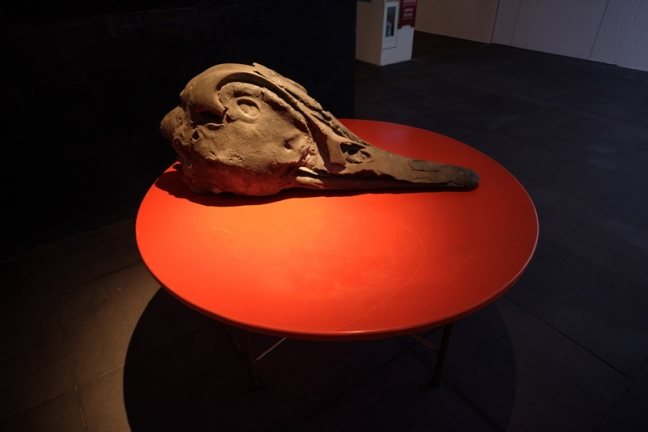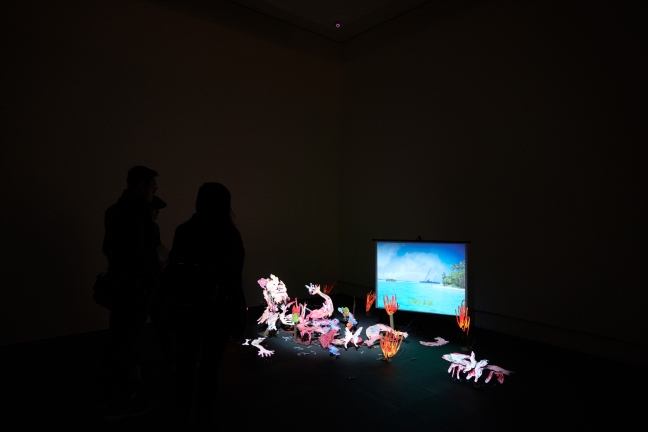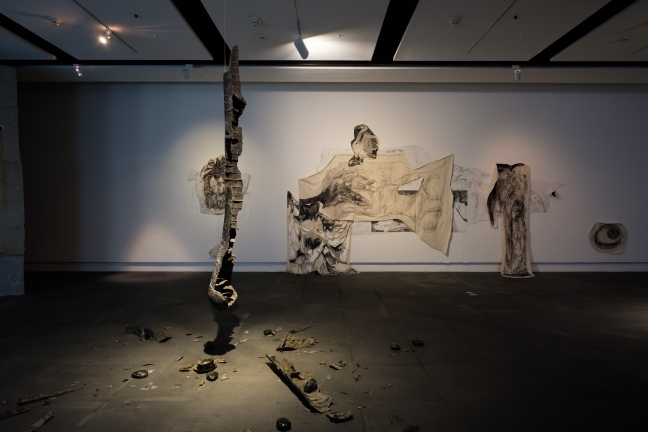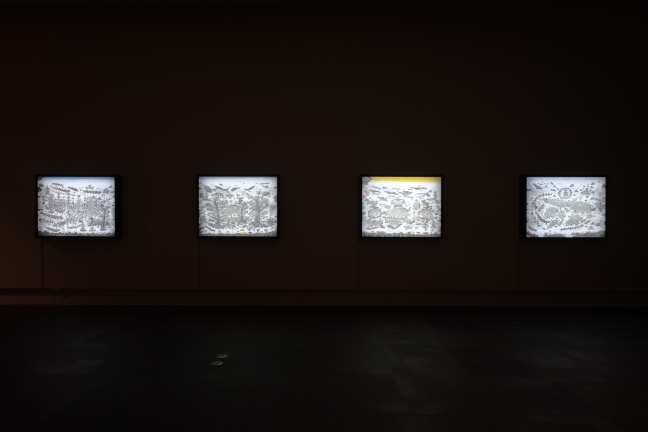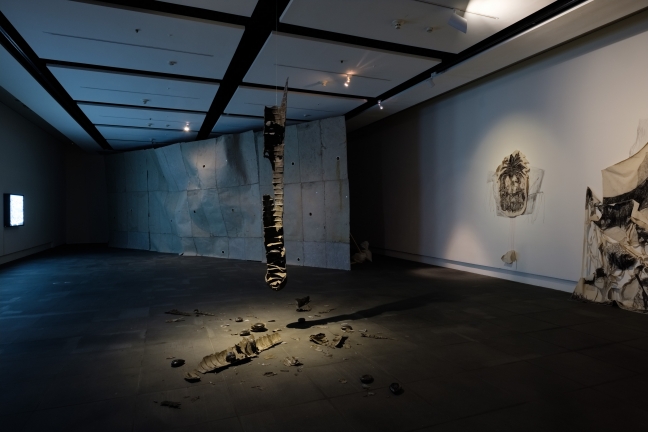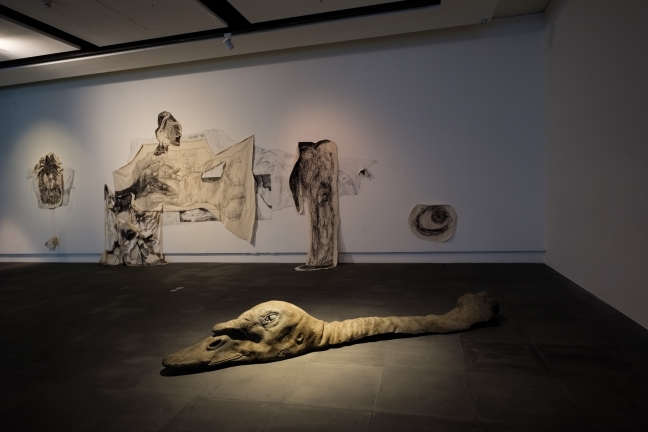Rhetoric of Shame
2017.02.24~2016.04.16
09:00 - 17:00
Curator|Ho Yu-Kuan Artists|Wang Hao-Yu, Li Yi-Fan, Lin Shu-Kai, Liao Chao-Hao, Deng Yau-Horng 【INTRODUCTION】 Text by Ho Yu-Kuan In The Museum of Innocence by Orhan Pamuk, Kemal, who is deeply infatuated with Füsun, transforms his intense love and desire into collecting objects that his love interest has kept or discarded, with the most peculiar being cigarette butts she has left behind. According to the narrative, the novel’s protagonist Kemal collects and arranges these objects as they are connected to the memories he holds of Füsun, his love interest throughout the novel. The collection contains 4,213 cigarette butts amassed throughout a period of eight years, representing the desires Kemal has accumulated inside, with each cigarette butt an imprint of a secret. The accumulated objects reveal the initial motivation behind this personal collection, as the collector is later categorized into two types: The Proud Ones, those pleased to show their collections to the world, and the Bashful Ones, who collect purely for the sake of collecting, and their collections serve the purpose of mourning for certain pains, distresses, or dark motives. Collectors amass pain through these objects. Bashful collectors reveal their own history by publicly displaying their collections, as their shame is appreciated in the form of a museum, with the logical order constructed by the space used for reorganizing their internal darkness. While inside the space, the viewers are either drawn in or pushed away by the shame, becoming unclear whether the shame belongs to others or themselves. After the conversion executed through the public display, past shame becomes more than just shame; other’s shame becomes a sense of thrill for the subjective self, as other’s detest becomes a form of content for the subjective self. Other’s fear and inconvenience then become a sadistic abuse for the subjective self. Amongst the contributing artists of this exhibition, Wang Hao-Yu folds garrulous rambles that have come about after desires have been represented; Li Yi-Fan exposes the dark side underneath constraints; Lin Shu-Kai converts the tragedy faced by his home into sweet images; mankind’s unbearable sides found in nature and human ethics are highlighted by Liao Chao-Hao; Deng Yau-Horng collects, reproduces remaining objects. If art is a form of rhetoric, these five artists have rhetorically converted shame and then expanded, contorted, metaphorized, and transformed it into other people’s shame. Whether dealing with society, the Internet generation, or individual dogmatic behaviors, the artworks created by these five artists have preserved their original contexts but also subverted their existing perspectives, with narratives reconstructed to evoke the viewers’ shame.
Curator|Ho Yu-Kuan Artists|Wang Hao-Yu, Li Yi-Fan, Lin Shu-Kai, Liao Chao-Hao, Deng Yau-Horng 【INTRODUCTION】 Text by Ho Yu-Kuan In The Museum of Innocence by Orhan Pamuk, Kemal, who is deeply infatuated with Füsun, transforms his intense love and desire into collecting objects that his love interest has kept or discarded, with the most peculiar being cigarette butts she has left behind. According to the narrative, the novel’s protagonist Kemal collects and arranges these objects as they are connected to the memories he holds of Füsun, his love interest throughout the novel. The collection contains 4,213 cigarette butts amassed throughout a period of eight years, representing the desires Kemal has accumulated inside, with each cigarette butt an imprint of a secret. The accumulated objects reveal the initial motivation behind this personal collection, as the collector is later categorized into two types: The Proud Ones, those pleased to show their collections to the world, and the Bashful Ones, who collect purely for the sake of collecting, and their collections serve the purpose of mourning for certain pains, distresses, or dark motives. Collectors amass pain through these objects. Bashful collectors reveal their own history by publicly displaying their collections, as their shame is appreciated in the form of a museum, with the logical order constructed by the space used for reorganizing their internal darkness. While inside the space, the viewers are either drawn in or pushed away by the shame, becoming unclear whether the shame belongs to others or themselves. After the conversion executed through the public display, past shame becomes more than just shame; other’s shame becomes a sense of thrill for the subjective self, as other’s detest becomes a form of content for the subjective self. Other’s fear and inconvenience then become a sadistic abuse for the subjective self. Amongst the contributing artists of this exhibition, Wang Hao-Yu folds garrulous rambles that have come about after desires have been represented; Li Yi-Fan exposes the dark side underneath constraints; Lin Shu-Kai converts the tragedy faced by his home into sweet images; mankind’s unbearable sides found in nature and human ethics are highlighted by Liao Chao-Hao; Deng Yau-Horng collects, reproduces remaining objects. If art is a form of rhetoric, these five artists have rhetorically converted shame and then expanded, contorted, metaphorized, and transformed it into other people’s shame. Whether dealing with society, the Internet generation, or individual dogmatic behaviors, the artworks created by these five artists have preserved their original contexts but also subverted their existing perspectives, with narratives reconstructed to evoke the viewers’ shame.


